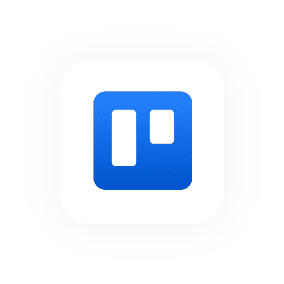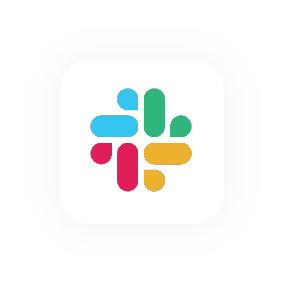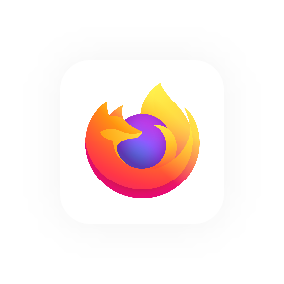Deep Work
What Is Deep Work? Unlocking Your Productivity Potential
From incessant email notifications to social media updates, our attention at work is constantly pulled in different directions. Fortunately, amidst the pop-up driven chaos, a concept called ‘deep work’ has emerged as a way to reclaim our focus, boost productivity and create meaningful results. This article breaks deep work into its main components, and provides some realistic ways for you to integrate this approach into your everyday working life.

What is deep work?
Deep work, a term coined by computer science professor Cal Newport, refers to a state of peak concentration. It’s the ability to immerse yourself in a cognitively demanding task without interruption. When you engage in deep work, you push your cognitive capabilities to their limits, resulting in high-value output that is hard to replicate.
In Newport’s words, deep working is “professional activity performed in a state of distraction-free concentration that creates new value and improves your skills.” In his book Deep Work: Rules for Focused Success in a Distracted World, Newport emphasises the need to log out of all communication tools and work uninterrupted for extended periods. While complete isolation like Bill Gates’ “think weeks” might not be feasible for everyone, aiming for 60-90 distraction-free minutes at a time can yield significant benefits.
“The ability to perform deep work is becoming increasingly rare at exactly the same time it is becoming increasingly valuable in our economy,” writes Newport.
Shallow Work vs. Deep Work
To understand the deep work philosophy better, let’s contrast it with its counterpart: shallow work. Shallow work consists of non-cognitive, minor or logistical-style tasks performed amidst distractions. Think of replying to emails, attending meetings, or handling routine administrative duties. While these tasks are necessary, they often lack significant value and drain our attention.
Deep work, on the other hand, maximises your cognitive capabilities by immersing yourself fully in the work. It’s that magical feeling when you’re so engaged that time seems to slip away—you’re “in the zone,” and your productivity soars. Examples of deep work include research, where you delve into complex topics, analyse data, or explore new ideas, and writing, whether it’s an article, report, or creative piece. The benefits of a regular deep work routine are clear: improved performance and high-quality output. However, context switching (like checking emails or messages) disrupts this flow, making it challenging in our modern, distraction-filled workplaces.
Benefits of deep work
1. High-value output
A deep work session enables you to create substantial, meaningful results. By dedicating uninterrupted time to important tasks, you produce work of exceptional quality.
2. Creating momentum
Deep work builds momentum. As you immerse yourself in deeply focused work, you gain traction and make progress. This positive feedback loop fuels further productivity.
3. Improved focus
Regular practice of deep work enhances your ability to concentrate. You train your mind to ignore distractions and dive deep into the task at hand.
4. Energised and empowered
Completing focused and productive work leaves you feeling energised and empowered. It’s a satisfying experience that fuels intrinsic motivation, which can have positive effects across your professional and personal life.
How to build a sustainable deep work habit
Choose your strategy
Explore different approaches to deep work. Some people prefer long, uninterrupted blocks of time, while others thrive with shorter, intense sessions. Find what works best for you.
Establish a routine
Set aside specific hours for deep work. Create a daily or weekly schedule that prioritises focused work. Consistency is key.
Perform a grand gesture
Create a deep work ritual that signals your brain it’s time for focused concentration. It could be as simple as lighting a candle or wearing a specific hat. These cues help you transition into a focused mindset.
Prioritise with the 4DX framework
The Four Disciplines of Execution (4DX) framework emphasises focusing on the most impactful tasks. Identify your “wildly important goals” and allocate deep work time accordingly.
Embrace downtime
Rest and recovery are essential for sustained deep work. Allow yourself breaks to recharge, whether it’s a walk, meditation, or a power nap.
The art of flow states
Beyond deep work lies the concept of flow states. Flow occurs when you’re fully immersed in an activity, losing track of time and experiencing effortless concentration. Achieving the flow of deep concentration requires a delicate balance between challenge and skill. When the challenge level matches your skill level, you enter a state of flow.
To cultivate flow:
- Set clear goals: Define specific objectives for your deep work sessions.
- Eliminate distractions: Create a serene environment conducive to flow.
- Feedback loop: Receive immediate feedback on your progress.
- Stretch your abilities: Aim for tasks that push your limits but remain acheivable.
Tools to boost your deep work practice
In the fast-paced digital landscape, distractions lurk around every corner. Digital tools, while often blamed for hindering deep work, can also be powerful allies when used strategically. Here are some smart tools that align with Hourly’s mission to enhance productivity and focus:
1. Clockwise
Meetings often disrupt our flow, fragment our concentration and leave us with unproductive gaps. Clockwise aims to change that. By optimising your calendar, it carves out uninterrupted blocks of time for deep work hours. Say goodbye to meeting conflicts and hello to more mental energy for meaningful tasks.
Key features:
- Meeting optimization: Clockwise rearranges your schedule to create contiguous deep work periods.
- Time zone management: Seamlessly navigate different time zones without compromising your focus.
- Lunch break preservation: Ensures you have time for lunch and other essential breaks.
2. Weekplan
Weekplan combines calendar management with task organisation. Use it to structure your deep work sessions, set specific goals, and prioritise tasks.
Key features:
- Goal setting: Set your goals for the quarter and break them down into HITs.
- High Impact Tasks (HITs): Thinking in terms of high impact tasks helps you think at a higher level of perspective.
- Quadrant view: Also called the Eisenhower quadrant, made popular by the book ‘Seven habits of highly effective people’, this tool will help you prioritise your workload.
3. Freedom
Freedom is your shield against digital distractions. Available for iOS, Android, and laptops, it empowers you to block selected websites, apps, or even the entire internet. Whether you’re working remotely or on the move, Freedom ensures that you practice deep work uninterrupted.
Key features:
- Website and app blocking: Tailor your restrictions to eliminate distractions.
- Cross-platform compatibility: Works seamlessly on mobile and desktop.
- Focus mode: Activate deep work mode and reclaim your attention.
Remember, these tools are your allies, not enemies. Use them intentionally to create an environment conducive to a deep work task, and watch your productivity soar.















